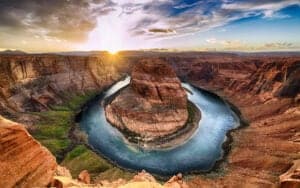These are Officially the 12 Sunniest States in the United States
On Earth, the sun is undoubtedly the most significant element. Life on Earth would not thrive without the sun’s warmth and light (solar energy). The sun heats the oceans, causes weather patterns, stirs the atmosphere, and gives plants energy to thrive. Furthermore, nothing revitalizes one’s health like a good walk in the sunshine. Sun exposure, however, is experienced differently throughout the United States. Because of the country’s massive surface area, the climate in each state differs. Thus, the energy and sunlight these states receive also vary depending on location and other factors. So, among the 50 states, which are the sunniest?
Although Florida is nicknamed the “Sunshine State,” it isn’t precisely the sunniest state in the country. Yet, it still ranks on our list. Using data from the Centers for Disease Control and Prevention, the 48 continental states and the District of Columbia are rated based on their average yearly sunshine totals, which are measured in kilojoules per square meter. Below, we will explore the 12 officially sunniest states in the US and how much sunshine they get every year.
The 12 Sunniest States in the United States
12. Arkansas – 4,724 kJ/m²
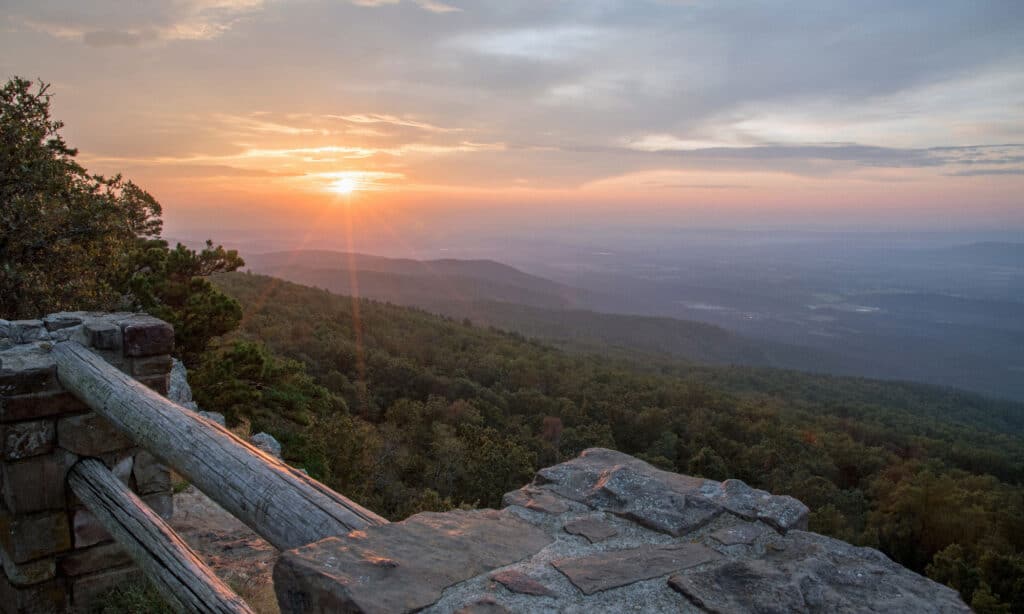
Stephan Hawks/Shutterstock.com
Getting average annual sunlight of 4,724 kJ/m, Arkansas ranks 12th among the sunniest states in the US. The majority of the year is bright and sunny throughout the state, and on average, the state gets 217 sunny days. The weather in the state is calm and pleasant, having a subtropical climate that features hot, humid summers and mild to cool winters. Whatever time of year you explore Arkansas, you’ll find that The Natural State has stunning scenery and plenty of possibilities for outdoor activity.
11. Louisiana – 4,725 kJ/m²
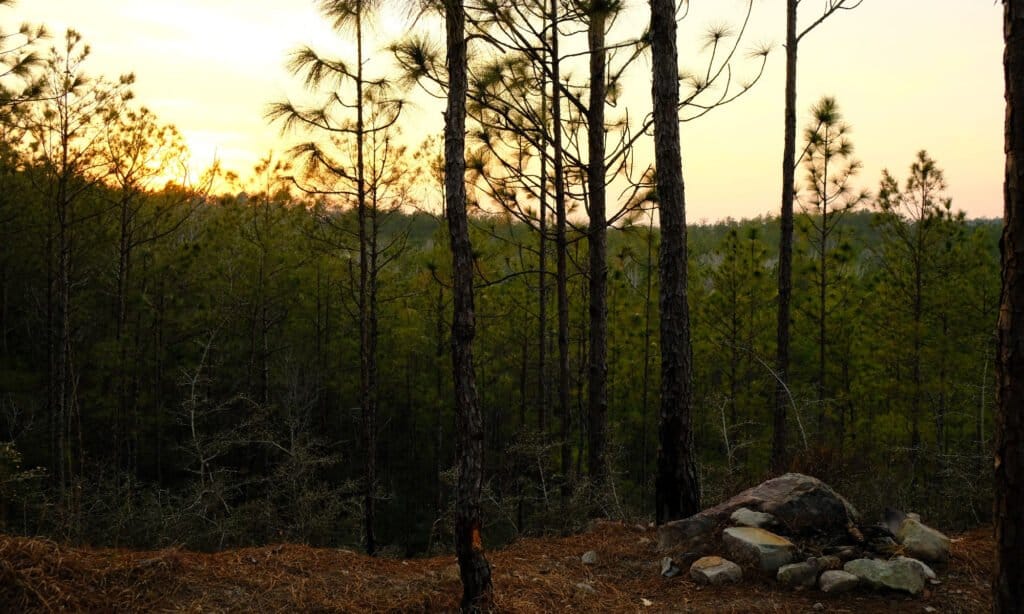
William Dillingham/Shutterstock.com
The climate in Louisiana is primarily humid subtropical, with long, hot summers and short, moderate winters. Louisiana is located in the Deep South region of the United States, close to the Gulf of Mexico. The continent’s southern position delivers a slew of storms in the spring and summer. Yet, despite having more precipitation than most states in the country, Louisiana is also one of the sunniest states, having annual average sunshine of 4,725 kJ/m². Louisiana is bordered on the north by Arkansas, east by Mississippi, south by the Gulf of Mexico, and the west by Texas. The climate is mainly influenced by the low latitudes and proximity to the Gulf. The state gets an average of 222 sunny days each year.
10. Florida – 4,859 kJ/m²
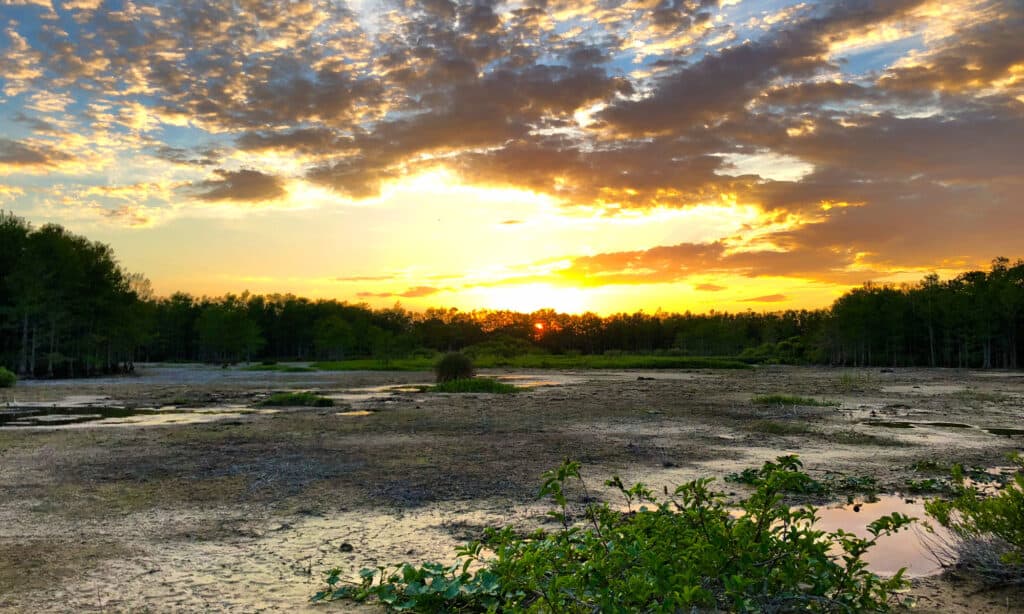
iStock.com/aimie Tuchman
With average annual sunshine of 4,859 kJ/m², Florida ranks tenth among the sunniest states in the country. Summers in Florida are hot, winters are cold, and the weather is damp and partially cloudy all year. The quantity of sunshine in Florida is excellent all year, so it’s no surprise that it’s known as the “Sunshine State.” In the summer, the excessive humidity makes the heat unbearable, while there are sometimes instances of extreme heat. Afternoon breezes and thunderstorms provide some relief, but you can swim in the water or seek shelter in air-conditioned buildings.
9. Utah – 4,887 kJ/m²
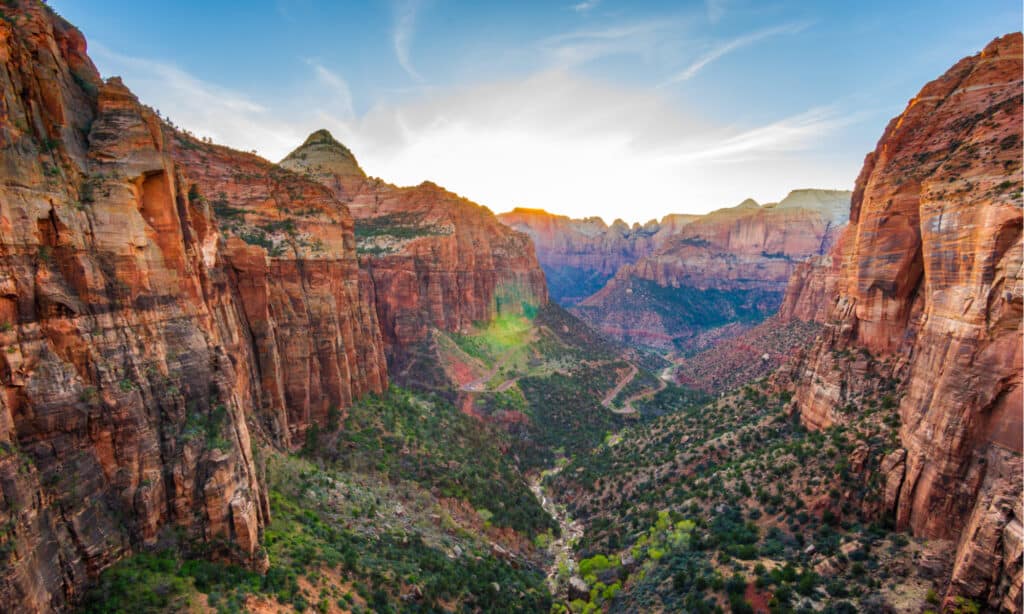
Asif Islam/Shutterstock.com
The climate in Utah is primarily dry, semi-arid, and desert. It has one of the lowest relative humidity percentages in the country, making it one of the driest states in the US. It has average annual sunshine of 4,887 kJ/m², ranking it 9th among the sunniest states. Utah has an average of 238 sunny days per year, which is more than the national average of 205 sunny days. July is the hottest month when temperatures typically range between 100 and 110 degrees.
8. Kansas – 4,890 kJ/m²
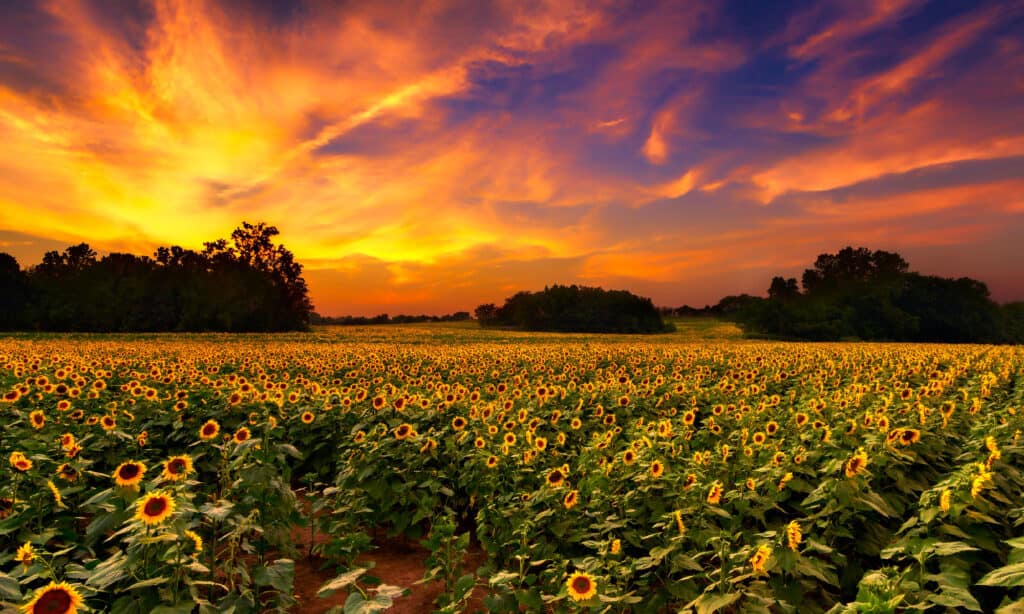
iStock.com/tomofbluesprings
With average annual sunshine of 4,890 kJ/m², Kansas lands in the 8th spot on this list. Summers in Kansas are generally hot, with mild winters and moderate humidity. Kansas is known for its “large sky” and broad expanses and its gorgeous, dramatic sunsets. The state enjoys all four seasons, with varying temperatures and precipitation. Summers in Kansas are often hot, with mild winters and mild humidity. The hottest month is July, with average hot temperatures reaching 81 degrees.
7. Oklahoma – 4,912 kJ/m²
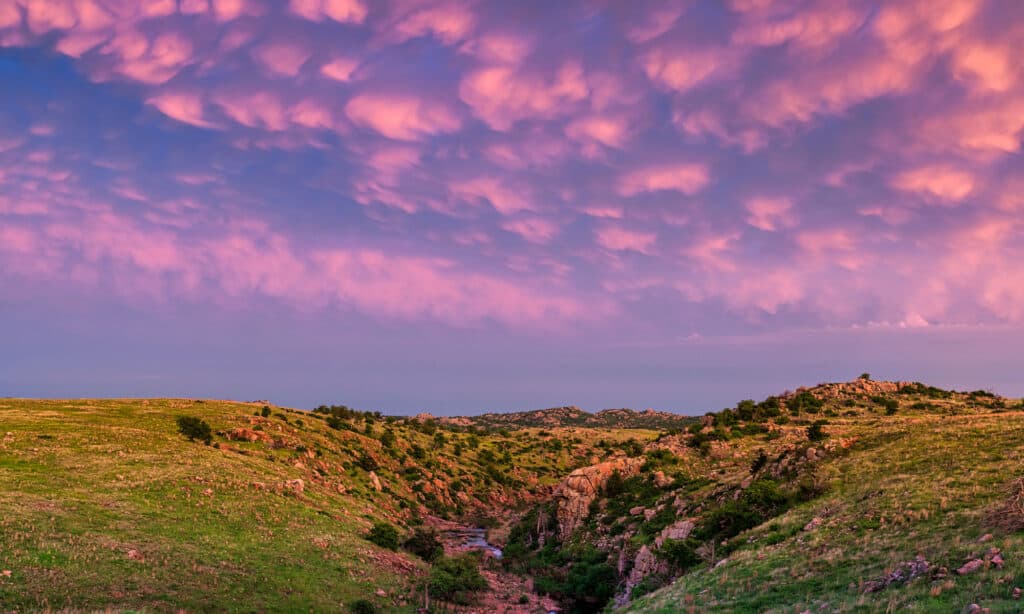
iStock.com/Brent_1
Oklahoma receives annual average sunlight of 4,912 kJ/m², ranking it seventh among the country’s sunniest. The average number of sunny days in Oklahoma each year is 234 days. But being sunny doesn’t mean less wind. Oklahoma is also one of the windiest states, and it is where the highest speed of wind in a tornado was recorded. Bridge Creek, Oklahoma, experienced the fastest tornado ever recorded in 1999. This violent F5 tornado boasts the world’s highest recorded wind speeds of 302 mph! It traveled a distance of 38 miles in 85 minutes. Thirty-six individuals died, and many houses were damaged.
6. Colorado – 4,960 kJ/m²
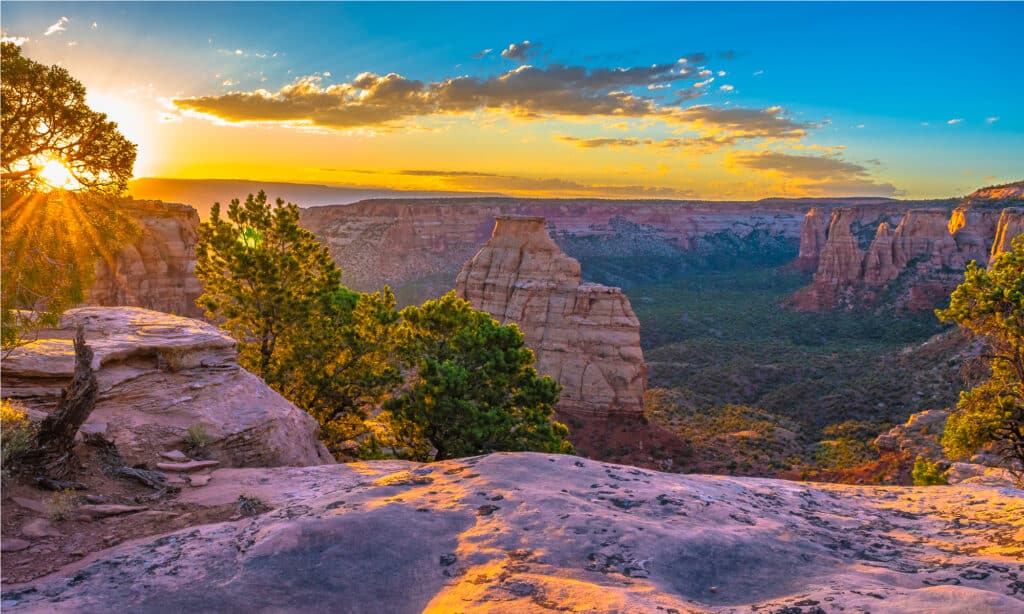
Jeremy Janus/Shutterstock.com
Colorado enjoys average sunlight of 4,960 kJ/m² per year, letting the state bask under the sun for far longer than other states. Denver’s low relative humidity makes for gorgeous, sunny days and cool, comfortable evenings in the summer. The city’s elevation of 5,280 feet above sea level, or exactly a mile high, contributes to the city’s temperate climate. Colorado has a dry climate due to its location far inland and far away from any big bodies of water.
5. California – 5,050 kJ/m²

iStock.com/Richard Par
On average, California gets total annual sunlight of 5,050 kJ/m² spread over 284 sunny days. California’s climate ranges from a sweltering desert to alpine tundra based on elevation, latitude, and proximity to the coast. Apart from being the country’s fifth sunniest, California ranks among the driest states, receiving only 22 inches of rainfall every year. Because of its Mediterranean climate, the weather in Hollywood’s state residence is pleasant all year. The area’s rainfall follows a seasonal pattern, with the most rain occurring between December and March. According to scientists who study the region’s prior climate, the current megadrought is the driest two-decade period in at least 1,200 years, and it is expected to last at least another year, if not longer.
4. Texas – 5,137 kJ/m²
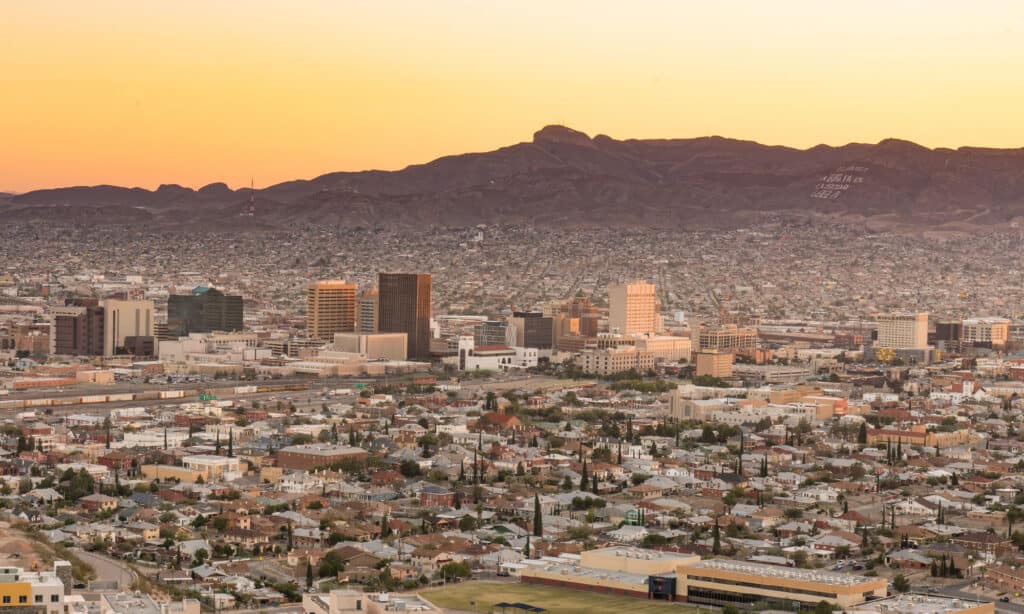
iStock.com/pabradyphoto
In general, the region of Texas east of Interstate 35 is subtropical, while the part west of Interstate 35 is an arid desert. Thus, it is not surprising that Texas is among the states that get the most sunlight, with an annual sunshine average of 5,137 kJ/m². Texas is a bright and sunny state, and the sun shines throughout the year, particularly in the western desert regions. There are even 3,750 hours of sunshine each year in El Paso, in the far west, and about 3,300 in Amarillo. The sun shines approximately half the time in winter and 3/4 of the time in summer.
3. Nevada – 5,296 kJ/m²
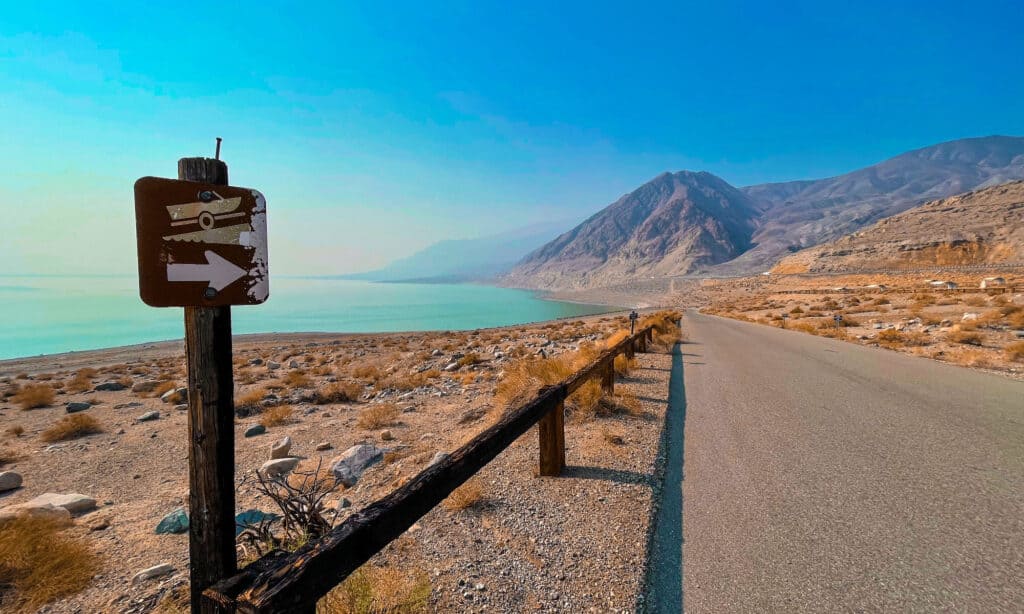
iStock.com/Christopher Thienel
Apart from holding the title as the country’s driest state, Nevada also gets more sunlight than most states. With annual average sunshine of 5,296 kJ/m², the state’s 252-day average of sunny days contribute to its already arid climate. Nevada gets a yearly rainfall of only 10.2 inches. Elevations in the state range from less than 500 feet in the sweltering lowlands to more than 13,000 feet in the freezing alpine forests of the north. Nevada receives 26 days of precipitation each year, with an average of 5 inches of rain per rainy day, compared to a national average of 38 inches.
2. New Mexico – 5,642 kJ/m²
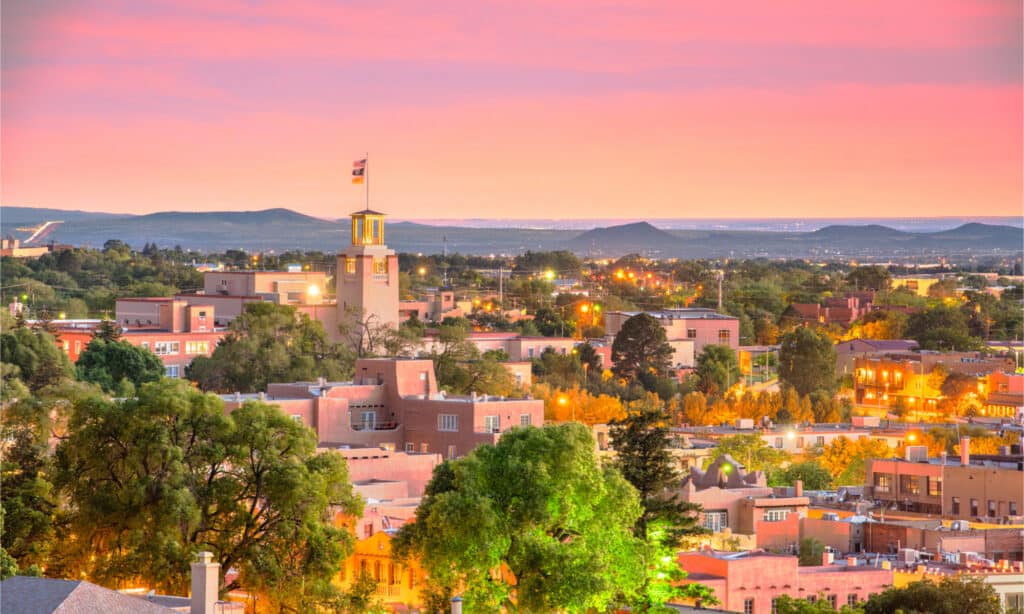
Sean Pavone/Shutterstock.com
While New Mexico is the fifth driest state in the US, it is also the second sunniest. New Mexico receives an annual average sunlight of 5,642 kJ/m² spread throughout a 293-day average period. Located in the southwest United States, New Mexico has a diverse climate, and the state is dominated by high plains, deserts, and mountains. With an average annual precipitation of 13.85 inches, New Mexico has one of the country’s driest climates. New Mexico’s hot climate has long been a draw, particularly for retirees and those seeking respiratory and other ailments treatment.
1. Arizona – 5,755 kJ/m²
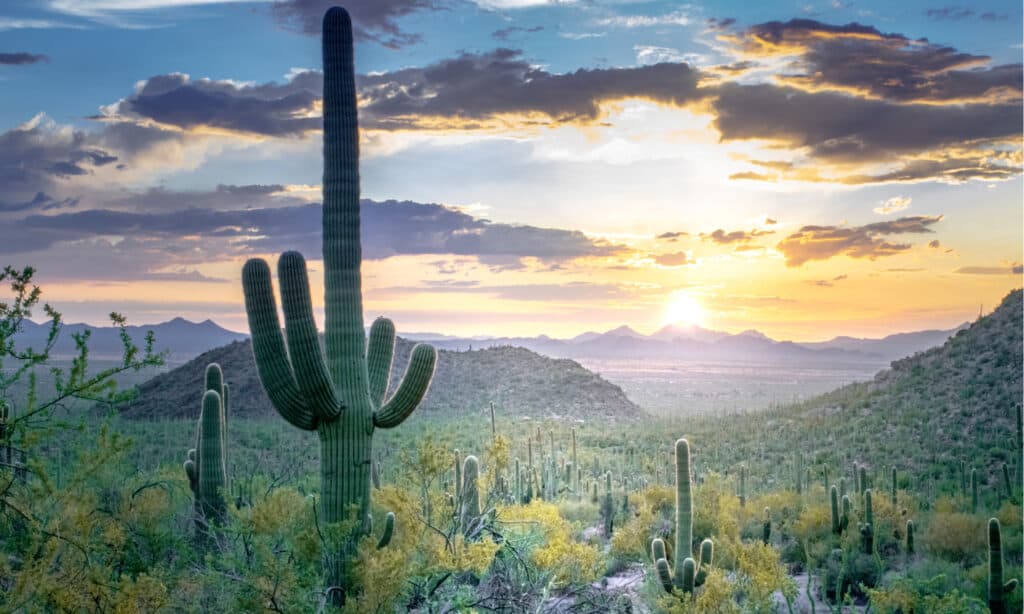
Nate Hovee/Shutterstock.com
Arizona has always been known for its dry, arid climate. With an annual sunlight average of 5,755 kJ/m², it tops the sunniest states in the US. The climate of Arizona, which is located in the southwest, is not uniform and varies widely within the state due to its vast size and varied elevation. Only 12.6 inches of annual rainfall and 0.9 inches of monthly precipitation fall in the state. Summer is June through September, and winter is November through February.
Even in the winter, particularly at high altitudes of the state, sun protection is necessary when there is less atmosphere to safeguard you from damaging UV radiation. The record high temperature in Phoenix is 122 degrees which happened on June 26, 1990. Phoenix gets an average of 300 sunny days every year, while Yuma sees sunshine about 320 days per year, making it the state’s sunniest city.
More from A-Z Animals
On Earth, the sun is undoubtedly the most significant element. Life on Earth would not thrive without the sun’s warmth and light (solar energy). The sun heats the oceans, causes weather patterns, stirs the atmosphere, and gives plants energy to thrive. Furthermore, nothing revitalizes one’s health like a good walk in the sunshine. Sun exposure, however, is experienced differently throughout the United States. Because of the country’s massive surface area, the climate in each state differs. Thus, the energy and sunlight these states receive also vary depending on location and other factors. So, among the 50 states, which are the sunniest?
Although Florida is nicknamed the “Sunshine State,” it isn’t precisely the sunniest state in the country. Yet, it still ranks on our list. Using data from the Centers for Disease Control and Prevention, the 48 continental states and the District of Columbia are rated based on their average yearly sunshine totals, which are measured in kilojoules per square meter. Below, we will explore the 12 officially sunniest states in the US and how much sunshine they get every year.
The 12 Sunniest States in the United States
12. Arkansas – 4,724 kJ/m²

Stephan Hawks/Shutterstock.com
Getting average annual sunlight of 4,724 kJ/m, Arkansas ranks 12th among the sunniest states in the US. The majority of the year is bright and sunny throughout the state, and on average, the state gets 217 sunny days. The weather in the state is calm and pleasant, having a subtropical climate that features hot, humid summers and mild to cool winters. Whatever time of year you explore Arkansas, you’ll find that The Natural State has stunning scenery and plenty of possibilities for outdoor activity.
11. Louisiana – 4,725 kJ/m²

William Dillingham/Shutterstock.com
The climate in Louisiana is primarily humid subtropical, with long, hot summers and short, moderate winters. Louisiana is located in the Deep South region of the United States, close to the Gulf of Mexico. The continent’s southern position delivers a slew of storms in the spring and summer. Yet, despite having more precipitation than most states in the country, Louisiana is also one of the sunniest states, having annual average sunshine of 4,725 kJ/m². Louisiana is bordered on the north by Arkansas, east by Mississippi, south by the Gulf of Mexico, and the west by Texas. The climate is mainly influenced by the low latitudes and proximity to the Gulf. The state gets an average of 222 sunny days each year.
10. Florida – 4,859 kJ/m²

iStock.com/aimie Tuchman
With average annual sunshine of 4,859 kJ/m², Florida ranks tenth among the sunniest states in the country. Summers in Florida are hot, winters are cold, and the weather is damp and partially cloudy all year. The quantity of sunshine in Florida is excellent all year, so it’s no surprise that it’s known as the “Sunshine State.” In the summer, the excessive humidity makes the heat unbearable, while there are sometimes instances of extreme heat. Afternoon breezes and thunderstorms provide some relief, but you can swim in the water or seek shelter in air-conditioned buildings.
9. Utah – 4,887 kJ/m²

Asif Islam/Shutterstock.com
The climate in Utah is primarily dry, semi-arid, and desert. It has one of the lowest relative humidity percentages in the country, making it one of the driest states in the US. It has average annual sunshine of 4,887 kJ/m², ranking it 9th among the sunniest states. Utah has an average of 238 sunny days per year, which is more than the national average of 205 sunny days. July is the hottest month when temperatures typically range between 100 and 110 degrees.
8. Kansas – 4,890 kJ/m²

iStock.com/tomofbluesprings
With average annual sunshine of 4,890 kJ/m², Kansas lands in the 8th spot on this list. Summers in Kansas are generally hot, with mild winters and moderate humidity. Kansas is known for its “large sky” and broad expanses and its gorgeous, dramatic sunsets. The state enjoys all four seasons, with varying temperatures and precipitation. Summers in Kansas are often hot, with mild winters and mild humidity. The hottest month is July, with average hot temperatures reaching 81 degrees.
7. Oklahoma – 4,912 kJ/m²

iStock.com/Brent_1
Oklahoma receives annual average sunlight of 4,912 kJ/m², ranking it seventh among the country’s sunniest. The average number of sunny days in Oklahoma each year is 234 days. But being sunny doesn’t mean less wind. Oklahoma is also one of the windiest states, and it is where the highest speed of wind in a tornado was recorded. Bridge Creek, Oklahoma, experienced the fastest tornado ever recorded in 1999. This violent F5 tornado boasts the world’s highest recorded wind speeds of 302 mph! It traveled a distance of 38 miles in 85 minutes. Thirty-six individuals died, and many houses were damaged.
6. Colorado – 4,960 kJ/m²

Jeremy Janus/Shutterstock.com
Colorado enjoys average sunlight of 4,960 kJ/m² per year, letting the state bask under the sun for far longer than other states. Denver’s low relative humidity makes for gorgeous, sunny days and cool, comfortable evenings in the summer. The city’s elevation of 5,280 feet above sea level, or exactly a mile high, contributes to the city’s temperate climate. Colorado has a dry climate due to its location far inland and far away from any big bodies of water.
5. California – 5,050 kJ/m²

iStock.com/Richard Par
On average, California gets total annual sunlight of 5,050 kJ/m² spread over 284 sunny days. California’s climate ranges from a sweltering desert to alpine tundra based on elevation, latitude, and proximity to the coast. Apart from being the country’s fifth sunniest, California ranks among the driest states, receiving only 22 inches of rainfall every year. Because of its Mediterranean climate, the weather in Hollywood’s state residence is pleasant all year. The area’s rainfall follows a seasonal pattern, with the most rain occurring between December and March. According to scientists who study the region’s prior climate, the current megadrought is the driest two-decade period in at least 1,200 years, and it is expected to last at least another year, if not longer.
4. Texas – 5,137 kJ/m²

iStock.com/pabradyphoto
In general, the region of Texas east of Interstate 35 is subtropical, while the part west of Interstate 35 is an arid desert. Thus, it is not surprising that Texas is among the states that get the most sunlight, with an annual sunshine average of 5,137 kJ/m². Texas is a bright and sunny state, and the sun shines throughout the year, particularly in the western desert regions. There are even 3,750 hours of sunshine each year in El Paso, in the far west, and about 3,300 in Amarillo. The sun shines approximately half the time in winter and 3/4 of the time in summer.
3. Nevada – 5,296 kJ/m²

iStock.com/Christopher Thienel
Apart from holding the title as the country’s driest state, Nevada also gets more sunlight than most states. With annual average sunshine of 5,296 kJ/m², the state’s 252-day average of sunny days contribute to its already arid climate. Nevada gets a yearly rainfall of only 10.2 inches. Elevations in the state range from less than 500 feet in the sweltering lowlands to more than 13,000 feet in the freezing alpine forests of the north. Nevada receives 26 days of precipitation each year, with an average of 5 inches of rain per rainy day, compared to a national average of 38 inches.
2. New Mexico – 5,642 kJ/m²

Sean Pavone/Shutterstock.com
While New Mexico is the fifth driest state in the US, it is also the second sunniest. New Mexico receives an annual average sunlight of 5,642 kJ/m² spread throughout a 293-day average period. Located in the southwest United States, New Mexico has a diverse climate, and the state is dominated by high plains, deserts, and mountains. With an average annual precipitation of 13.85 inches, New Mexico has one of the country’s driest climates. New Mexico’s hot climate has long been a draw, particularly for retirees and those seeking respiratory and other ailments treatment.
1. Arizona – 5,755 kJ/m²

Nate Hovee/Shutterstock.com
Arizona has always been known for its dry, arid climate. With an annual sunlight average of 5,755 kJ/m², it tops the sunniest states in the US. The climate of Arizona, which is located in the southwest, is not uniform and varies widely within the state due to its vast size and varied elevation. Only 12.6 inches of annual rainfall and 0.9 inches of monthly precipitation fall in the state. Summer is June through September, and winter is November through February.
Even in the winter, particularly at high altitudes of the state, sun protection is necessary when there is less atmosphere to safeguard you from damaging UV radiation. The record high temperature in Phoenix is 122 degrees which happened on June 26, 1990. Phoenix gets an average of 300 sunny days every year, while Yuma sees sunshine about 320 days per year, making it the state’s sunniest city.




